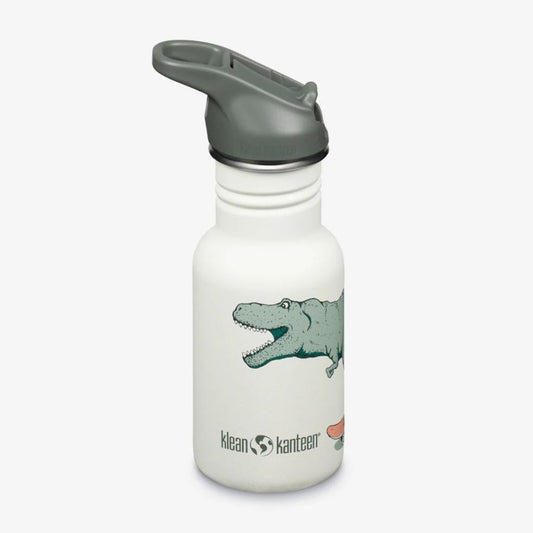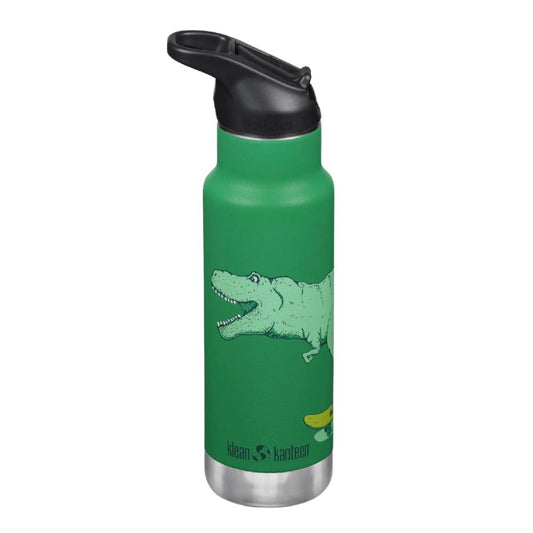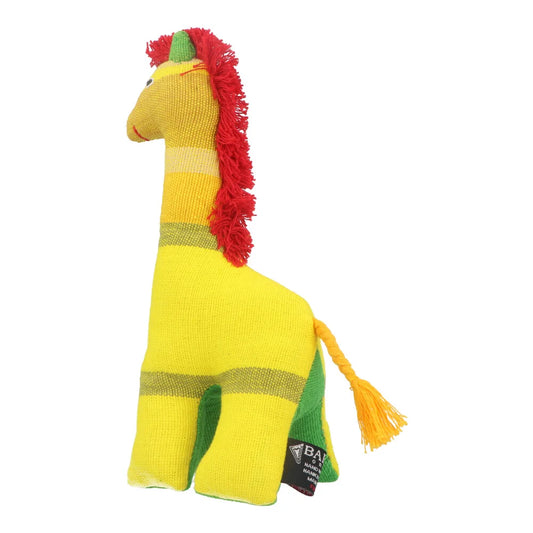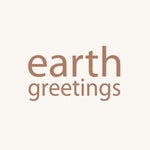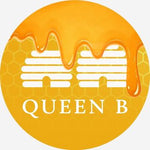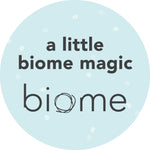
The wildly popular Australian animated series about a dog called Bluey is ABC iView’s most watched program in history, and has gone global after been picked up by Disney and the BBC.
Bluey exudes the values of family and what it means to be kind, learn and support each other.
This immense influence over children and their families is a power to be wielded responsibly, don't you agree? Bluey is licensed onto toys, books, videos, party supplies, food and drink; and as I was recently shocked to notice, plastic-packaged, unhealthy Palmolive 3-in-1 kids body wash!
This product endorses the very practices that will make the world a less safe and less wonderous place for our children—deforestation, species extinction, climate change, and plastic pollution.
We love what the talented creators of Bluey, Ludo Studio, share from our Brisbane home to the world. So, let's hope this message gets through that Bluey could make an even greater gift. 🙏
Instead of Colgate-Palmolive and Bluey promoting a needless product that fuels the appetite for palm oil and petroleum, let's teach children that a simple bar of soap is all they need to clean their bodies.
This Bluey-themed body wash might be eye-catching, bubbles of fun, and smell like a sour berry lolly, but let's consider what message this sends to children.
All the way from Thailand where it is made, this body wash represents a global journey fraught with environmental and ethical questions.
What’s in the bottle of Bluey's body wash?
Packaged in a bright, single-use plastic container, this liquid is a concoction of petrochemicals, palm oil derivatives, synthetic fragrances, artificial colours and preservatives.
The bubbles comes from a synthetically made detergent (or surfactant), whereas a bar of soap is made with a simple saponification process.
Whatever the guff on the bottle, this "3-in-1" detergent is nothing special—in fact the ingredients are very similar to the grown up's version.
Palmolive Milk & Honey Bodywash
Water, Sodium Laureth Sulfate, Glycerin, Cocamidopropyl Betaine, Sodium Chloride, Fragrance, Cocamide MEA, Glycol Distearate, Sodium Salicylate, Sodium Benzoate, Citric Acid, Tetrasodium EDTA, Coco-Glucoside, Polyquaternium-7, Lactose, Glyceryl Oleate, Glyceryl Stearate, Honey, Whey Protein, CI 19140, CI 16035.
Palmolive Bluey Kids Bodywash, Shampoo and Conditioner
Water, Sodium Laureth Sulfate, Disodium Laureth Sulfosuccinate, Cocamidopropyl Betaine, Propylene Glycol, PEG-120 Methyl Glucose Dioleate, Cocamide MEA, Fragrance, Citric Acid, Sodium Salicylate, Sodium Benzoate, Tetrasodium EDTA, Hydroxypropyl Guar Hydroxypropyltrimonium Chloride, Poloxamer 124, CI 17200, CI 42090, CI 60730.
At the end of this post, you can find a table with more detail on what the ingredients are made from, and the issues caused for the health of people and planet.
- Petrochemicals: These are not only harsh on tender skin, but are derived from non-renewable fossil fuels. The extraction and processing of these contribute significantly to global warming and environmental degradation. Our reliance on these substances is steering the planet toward drastic climate change, affecting the future that our children will inherit.
- Palm Oil: Responsible for deforestation, habitat destruction, and pushing endangered species like the orangutan, Sumatran tiger, and elephants to extinction. The beautiful creatures that captivate our children in books and on screens are losing their homes. Just like in the Bluey episode The Creek, the beautiful natural world is a precious place to preserve.
- Complicated Synthetic Detergent: Firstly, detergents strip oil and dry out skin. Therefore, other synthetic ingredients have to be added for moisture! Surfactants are manufactured by large chemical companies using very complicated chemical processes that involve petrochemicals being extracted and shipped all around the world.
- Synthetic Fragrances, Colours and Preservatives: The fake fragrance in this body wash is ridiculously strong and, to be frank, gross. It's alarming to think of children using this on their vulnerable skin. All these additives can irritate and cause allergies, and are non-biodegradable, lingering in ecosystems long after the suds have drained away.
- Plastic Packaging: A nightmare for our landfills and oceans, contributing to a scenario where there could be more plastics than fish in our oceans by 2050.
Why not a humble bar of soap?
Now, let's imagine a different scenario. Picture a simple, unassuming bar of soap:
- made from pure olive oil, hemp and other plant oils
- made in Australia
- unscented
- plastic free.
It’s minimalistic, effective, and has a significantly lower environmental footprint. Here’s why it’s a better choice for our kids and our planet:
Manufacturing: The body wash involves a complex mix of ingredients sourced from various parts of the world, requiring significant energy and resources for production and transportation. In contrast, the bar of soap is made locally using close-to-nature ingredients, cutting down on transportation emissions and supporting local businesses.
Packaging: Bars of soap are sold unpackaged or in paper, as opposed to the plastic bottles of liquid washes. Paper decomposes or can be easily recycled, reducing landfill waste and oceanic pollution.
Waste: With bar soaps, what you use is what you get. No extra ingredients, no bottles—just soap. They tend to last longer than their liquid counterparts, meaning you buy less frequently and generate less waste.
Chemical footprint: The bar soap made from natural olive oil is free from synthetic additives, reducing the chemical load on our bodies and the environment.
Entertaining a better future
As parents, educators, and responsible consumers, it's crucial to teach the next generation not only about hygiene but also about sustainability. Instead of flashy, character-branded products that may appeal to children for all the superficial reasons, why not introduce them to products that are kind to their skin and the earth?
Imagine Bluey and Bingo using a bar of olive oil soap—splashing, playing, and learning the importance of keeping both clean and green. Now that's a plot twist we can all cheer for!
Every soap bubble can be a bubble of change. Here’s to making clean choices for a cleaner world—where the tales of orangutans, tigers, and elephants remain realities, not just stories of the past.
Some of the Bluey endorsed products to be found. Note that it's the BBC that has the licensing and merchandising rights for Bluey worldwide, not the creators. But perhaps they have some sway on what is ok for Bluey to be associated with. 😊🙏
RELATED READING
How to Avoid Band Aids with PFAS
Breakdown of the ingredients in Palmolive Bluey 3-in-1 wash
In fact, you'll find similar ingredients in most commercial liquid body washes and shampoos - and to be frank, in most dishwashing liquid and laundry liquid, because they are all detergents!
| Chemical Name | Source | Purpose in Body Wash | Known Health Impacts | Environmental Concerns |
|---|---|---|---|---|
| Water | Naturally occurring | Solvent, hydrates skin | - | Minimal |
| Sodium Laureth Sulfate | Petrochemicals, may also be made from palm oil or coconut oil | Surfactant, cleansing agent | Skin and eye irritation, potential contaminant concerns | Biodegradability issues, fossil fuel, contributes to global warming, deforestation, risks to biodiversity, and endangering species with palm oil sourcing |
| Disodium Laureth Sulfosuccinate | Petrochemicals | Surfactant, cleansing and foaming agent | Mild skin and eye irritation | Better biodegradability than SLES, energy-intensive processing, contributes to global warming |
| Cocamidopropyl Betaine | Coconut oil or palm oil | Surfactant, conditions skin, provides foam | Allergic reactions in sensitive individuals | Biodegradable, deforestation, risks to biodiversity, and endangering species with palm oil sourcing |
| Propylene Glycol | Petrochemicals | Humectant, skin conditioning agent | Skin and eye irritation at high concentrations | Low biodegradability, aquatic toxicity, energy-intensive extraction, contributes to global warming |
| PEG-120 Methyl Glucose Dioleate | Petrochemicals | Thickener, emulsifier | Contamination with ethylene oxide and 1,4-dioxane | Poor biodegradability, energy-intensive production, contributes to global warming |
| Cocamide MEA | Coconut oil or palm oil | Foaming agent, stabilizes foam | Skin and eye irritation; nitrosamine contamination | Biodegradable, deforestation, risks to biodiversity, deforestation and endangering species with palm oil sourcing |
| Fragrance | Petrochemicals | Provides scent | Allergies and dermatitis | Variable, energy-intensive production, potential for bioaccumulation, depends on chemicals used |
| Citric Acid | Naturally occurring or synthetically made | pH adjuster, preservative | Skin irritation in sensitive individuals | Biodegradable, if synthetically made involves petrochemicals and energy-intensive processing |
| Sodium Salicylate | Synthetically made | Preservative, anti-inflammatory | Allergic reactions or sensitivity | Biodegradable, synthetically made involves energy-intensive processing |
| Sodium Benzoate | Synthetically made | Preservative | Potentially harmful in presence of vitamin C (forming benzene) | Biodegradable, synthetically made involves energy-intensive processing |
| Tetrasodium EDTA | Petrochemicals | Chelating agent (binds metal ions) | Enhances skin penetration of other chemicals | Poor biodegradability, disrupts aquatic ecosystems, energy-intensive extraction, contributes to global warming |
| Hydroxypropyl Guar Hydroxypropyltrimonium Chloride | Derived from guar beans | Conditioning agent, thickener | - | Biodegradable, generally eco-friendly unless chemically modified |
| Poloxamer 124 | Petrochemicals | Surfactant, emulsifier | Low irritation potential | Moderate biodegradability, minimal aquatic toxicity, energy-intensive processing |
| CI 17200 (D&C Red No. 33) | Petrochemicals | Colorant | Skin irritation in sensitive individuals | Low biodegradability, potential for bioaccumulation, energy-intensive processing |
| CI 42090 (FD&C Blue No. 1) | Petrochemicals | Colorant | Allergenic and irritant reactions in sensitive individuals | Low biodegradability, potential for bioaccumulation, energy-intensive processing |
| CI 60730 (Ext. Violet 2) | Petrochemicals | Colorant | Allergic reactions | Low biodegradability, potential for bioaccumulation, energy-intensive processing |











